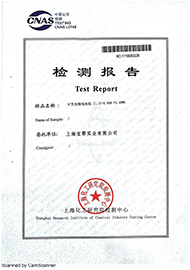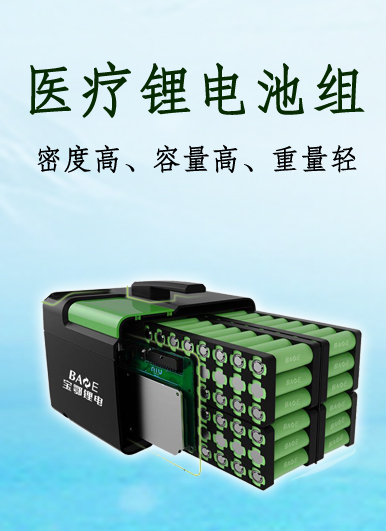The value of lithium battery energy storage in environmental protection is mainly reflected in the matching with renewable energy power generation. It can greatly transform the energy structure, reduce the use of fossil energy such as coal and electricity, and achieve the goal of reducing carbon dioxide emissions. Although the cost of lithium battery energy storage plants is twice as high as that of lead-acid batteries, this is not the reason to abandon lithium batteries. Different applications require different energy storage power and capacity, and all kinds of energy storage technologies have their suitable application fields.
On July 18, the first 100,000 kilowatt battery energy storage power station in China was put into operation in Zhenjiang, Jiangsu Province, which opened a new stage of commercial operation of large battery energy storage power stations in China. China's new lithium-ion batteries have met the safety requirements of commercial operation, such as high temperature resistance and non-explosion, which provide technical support for the construction of large-scale battery energy storage power plants. Furthermore, the cost of lithium batteries is expected to be reduced to 0.25 yuan per degree in the future.
The one-time investment of lithium battery energy storage system is much higher than that of lead-acid battery, and lithium-ion battery technology has made rapid progress and has a good industrial foundation. It is gradually penetrating into the field of decentralized energy storage and large-scale energy storage.
II. Exploring Business Models for Demonstration Projects
Since June this year, there have been many news coming from Henan, Jiangsu, Fujian, Guangdong, Qinghai, Inner Mongolia and other places, such as grid energy storage bidding, start-up and grid connection, which shows that the energy storage market in China is expanding.
In fact, these projects are only part of this year's "energy storage heat". Among these new projects, the supporting energy storage systems are lithium batteries. Many demonstration applications of lithium battery energy storage power plants are exploring the business model of energy storage in the grid-connected and grid-side of centralized renewable energy.
At present, the project of economic value lies in the application of small user side. According to the information provided by Zhongguancun Energy Storage Industry Technology Alliance to journalists, industrial and commercial users can install energy storage system to save capacity electricity charges in areas with large price difference between peak and valley, and in areas with flexible rules for verification of capacity electricity charges, they can also save capacity electricity charges for users. Compared with the revenue, the cost of lithium battery energy storage power station is relatively high.
3. Multiple energy storage technologies are still being explored
In fact, the technical route of energy storage is not single. China is actively developing a variety of energy storage technologies. By 2050, China's total installed capacity will reach 50 billion kilowatts (KW). By adjusting the balance of supply and demand according to the scale, the capacity of energy storage will reach 400 million KW. At present, lithium-ion batteries and lead-carbon batteries are the main technologies, supplemented by compressed air energy storage, flywheel energy storage, supercapacitors, liquid flow batteries and other technical routes. Different energy storage technology routes can basically meet the needs of different application scenarios.
Liquid flow and lithium batteries, as well as other battery energy storage technologies, are in the stage of commercial exploration and transformation, but in fact, they are not primary and laboratory concepts. Huang Mianyan said that "all-vanadium redox flow battery has the characteristics of safety, longevity, recyclability, and independent configuration of power module and capacitance module."
Dalian Institute of Chemicals and Dalian Rongke Energy Storage Technology Development Co., Ltd. of Chinese Academy of Sciences jointly implemented a number of demonstration projects of "light-storage" and "wind-light-storage" applications using all-vanadium liquid-flow batteries, which promoted the technology of liquid-flow batteries with independent intellectual property rights to enter the primary stage of industrialization.
IV. Prospects and Expectations of Lithium Battery Energy Storage Market in China
(1) New energy power generation and ancillary services will be the largest energy storage market;
As the world's largest electricity application market, China has a lot of room for renewable energy development. We have reason to believe that in the near future, China will become the world's largest battery energy storage market. At the same time, with the continuous opening of the electricity market, power ancillary services will also provide a broad market space for battery storage. In this direction, European and American countries have set an example for us.
(2) The pace of energy restructuring can be greater;
As mentioned above, the power supply structure of our country is still unreasonable. The high proportion of coal-fired power restricts the pace of renewable energy development and utilization, and also brings many inconveniences to people's lives.
(3) The pace of opening up the electricity market can be quicker;
(4) The subsidy policy for energy storage should be brought to the ground as soon as possible.
At present, lithium battery energy storage power plant is the main energy source, and many energy storage technologies are still being explored. In the power grid, as long as the scale is large enough, lithium battery energy storage power station is undoubtedly one of the best scheduling resources.一锂电池储能在环保方面的价值主要体现在与可再生能源发电的配套上,可以大幅度改造能源结构,减少煤电等化石能源的使用,进而实现减少二氧化碳排放的目的。虽然锂电池储能电站的成本比铅酸电池高出一倍,但这并不是抛弃锂电池的理由。不同应用场合对储能功率和容量要求不同,各种储能技术都有其适宜的应用领域。
7月18日,我国首个10万千瓦级电池储能电站在江苏镇江正式并网投入运营,开启了我国大型电池储能电站商业化运行的新阶段。我国的新型锂离子电池已经满足商业运行所要求的耐高温、不爆炸等安全需求,这都为开启大规模电池储能电站建设,提供了技术支撑。而且,预计未来锂电池成本将降低到每度0.25元。
锂电池储能系统的一次性投入比铅酸电池高出许多,并且锂离子电池技术进步快、产业基础较好,其正逐步向分散储能及规模储能领域渗透。
二、示范项目探索商业模式
从今年6月以来,河南、江苏、福建、广东、青海、内蒙古等多地不断有电网储能招标、开工、并网等消息传来,表明我国的储能市场正在不断扩大。
事实上,上述项目只是今年“储能热”中的一部分。在这些新增项目中,配套储能系统的均为锂电池,锂电池储能电站的众多示范应用,就是在不断探索储能在集中式可再生能源并网和电网侧应用的商业模式。
目前有经济价值的项目在于小型用户侧的应用。中关村储能产业技术联盟给记者提供的资料显示,工商业用户安装储能系统,在峰谷电价差较大的地区,可以为其节省容量电费;在容量电费的核定规则比较灵活的地区,也可以为用户节省容量电费。相对于收益来讲,锂电池储能电站的成本还是比较高的。
三、多项储能技术仍在探索
事实上,储能的技术路线并不单一。我国正在积极发展多种储能技术,2050年我国总装机容量将达到500亿千瓦(KW),按照规模调整供需平衡,储能的容量将达到4亿KW。目前,以锂离子电池和铅炭电池为主,辅之以压缩空气储能、飞轮储能、超级电容、液流电池等技术路线,不同的储能技术路线已经基本能满足不同应用场景的需求。
液流和锂电池,还有其他电池的储能技术都处在商业化探索转化的阶段,其实并不是初级、实验室的概念。黄绵延表示,“全钒氧化还原液流电池就具有安全性、长寿性、可循环性,以及功率模块、电容量模块可独立配置等特点。”
中科院大连化物所与大连融科储能技术发展有限公司联合,采用全钒液流电池实施了多项“光—储”“风—光—储”应用示范工程,推动我国自主知识产权的液流电池技术进入产业化初级阶段。
四、中国锂电池储能市场的展望与期待
①新能源发电配套和电力辅助服务将是最大的储能市场;
中国作为全球最大的电力应用市场,拥有很大的可再生能源发展空间,我们有理由相信不久的将来,中国将会成为全球最大的电池储能市场。同时,随着电力市场的不断开放,电力辅助服务也会为电池储能提供广阔的市场空间,在此方向上,欧美国家已经为我们树立了榜样。
②能源结构调整步伐可以再大一些;
如前面所述,我国的电力电源结构还很不合理,高比例的煤电制约了可再生能源开发利用的步伐,也给人们的生活带来了许多不便;
③电力市场开放步伐可以再快一些;
④储能补贴政策要及早落地。
目前锂电池储能电站为主要能源,多项储能技术仍在探索。在电网中,只要规模足够大,锂电池储能电站无疑是最优质的调度资源之一。一リチウム電池のエネルギーの環境保護における価値は主に再生可能エネルギー発電との組み合わせに反映され、エネルギー構造を大幅に改造し、石炭や電気などの化石エネルギーの使用を減少させ、さらに二酸化炭素の排出を削減する目的が実現される。リチウムイオン蓄電池の発電所のコストは鉛酸電池の倍以上になりますが、リチウムイオン電池を捨てる理由ではありません。異なった応用の場合、エネルギー貯蔵の電力と容量に対する要求は違っています。各種のエネルギー貯蔵の技術には適した応用分野があります。
7月18日、中国初の10万キロワット級の電池貯蔵能力発電所は江蘇鎮江で正式にネットワーク運営を開始し、中国の大型電池貯蔵能力発電所の商業化運行の新たな段階を開いた。中国の新型リチウムイオン電池はすでに商業運行に要求されている耐高温、非爆発などの安全需要を満たしており、これは大規模な電池貯蔵能力発電所の建設を開始するために技術的なサポートを提供しています。また、将来的にはリチウム電池のコストは1度0.25元に下がると予想されています。
リチウム電池のエネルギー貯蔵システムの1回限りの投入は、鉛酸電池よりもはるかに高く、リチウムイオン電池の技術の進歩が速く、産業基盤が優れており、徐々に分散貯蔵エネルギーと規模貯蔵エネルギーの分野に浸透しています。
二、モデルプロジェクトはビジネスモデルを探索する
今年の6月以来、河南、江蘇、福建、広東、青海、内モンゴルなど多くの地域で電力網があり、入札、操業、ネットなどの情報が流れてきました。中国のエネルギー市場は絶えず拡大していることを示しています。
実際には、上記の項目は今年の「熱貯蔵」の一部にすぎません。これらの新規プロジェクトの中で、セットにして蓄えるエネルギーシステムは全部リチウム電池、リチウム電池蓄えるエネルギー発電所の多くの模範的な応用で、集中中国式再生可能エネルギーのネットワークと電力網の側で応用できるビジネスモデルを絶えず模索しています。
現在の経済的価値のあるプロジェクトは小型ユーザー側の応用にある。中関村エネルギー貯蔵産業技術連盟が記者に提供した資料によると、商工業ユーザーはエネルギー貯蔵システムを設置し、ピーク谷の電力価格差が大きい地域では、電気料金の節約が可能である。収益に対して、リチウム電池のエネルギー発電所のコストはまだ比較的に高いです。
三、多項目のエネルギー貯蔵技術は依然として探求している。
実際、エネルギーを蓄える技術路線は単一ではない。わが国は積極的に多種類のエネルギー貯蔵技術を発展させており、2050年には中国の総設備容量は500億キロワット(KW)に達し、規模に応じて需給バランスを調整し、エネルギーの容量は4億KWに達する。現在、リチウムイオン電池と鉛炭電池を主として、圧縮空気貯蔵能力、飛行輪貯蔵エネルギー、スーパー容量、液体電池などの技術路線を補佐して、異なるエネルギー貯蔵技術路線はすでに大体において異なった応用シーンの需要を満たすことができます。
液体流とリチウム電池、その他の電池のエネルギー貯蔵技術はいずれも商業化の探求転化の段階にあります。実は初級、実験室の概念ではありません。黄綿延は「全バナジウム酸化還元液流電池は安全性、長寿性、循環性、電力モジュール、電気容量モジュールが独立して配置できるなどの特徴があります。」
中国科学院大連化物所と大連融科蓄能技術発展有限公司は共同で、全バナジウム液流電池を用いて多くの「光ー蓄える」「風ー光ー蓄える」応用模範工事を実施し、中国自主知的財産権の液体流電池技術を産業化の初期段階に推し進めています。
四、中国のリチウム電池市場の展望と期待
①新エネルギー発電セットと電力補助サービスは最大のエネルギー貯蔵市場となる。
中国は世界最大の電力応用市場として、大きな再生可能エネルギーの発展空間を持っています。近い将来、中国は世界最大の電池市場になると信じています。同時に、電力市場が開放されるにつれて、電力補助サービスも電池貯蔵のために広い市場空間を提供してくれます。
②エネルギー構造調整の歩調をもう少し大きくしてもいいです。
前に述べたように、我が国の電力の電源の構造はまたとても合理的ではありませんて、高い割合の石炭は再生可能エネルギーの開発と利用の歩調を制約して、人々の生活にも多くの不便をもたらしました。
③電力市場の開放ペースはもう少し速くできます。
④エネルギー貯蔵補助政策は早めに着地する。
現在、リチウム電池貯蔵能力発電所は主要エネルギーであり、多くのエネルギー貯蔵技術は依然として模索されている。電力網の中で、規模が十分大きい限り、リチウム電池のエネルギー発電所は最高品質の管理資源の一つに違いない。

















